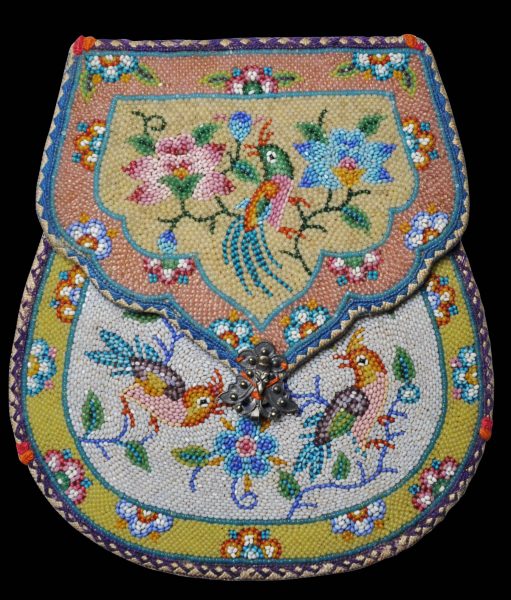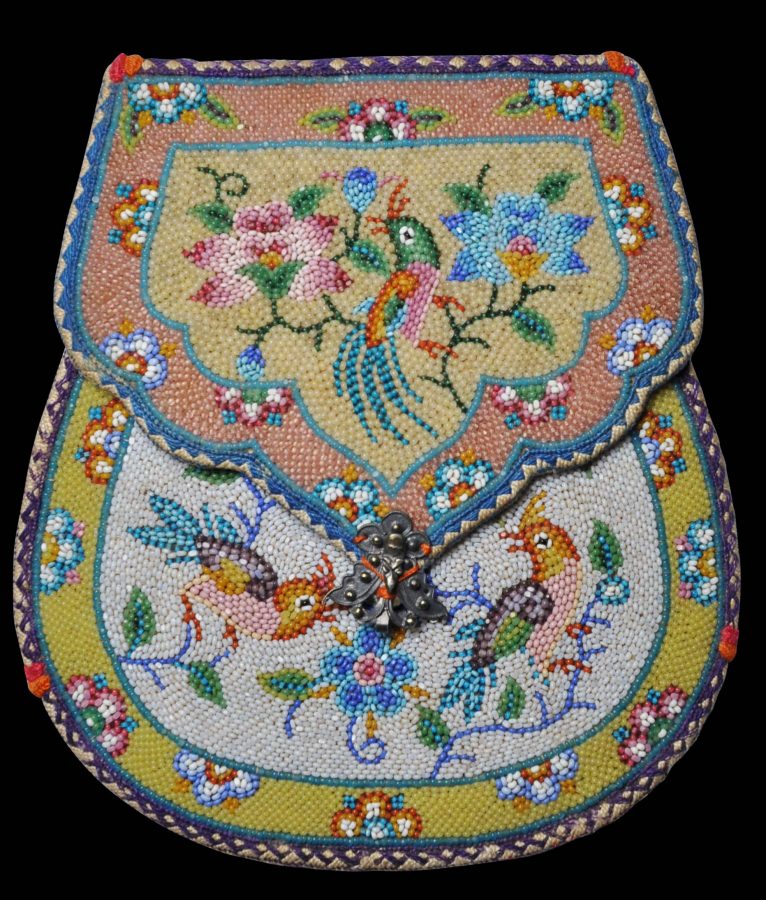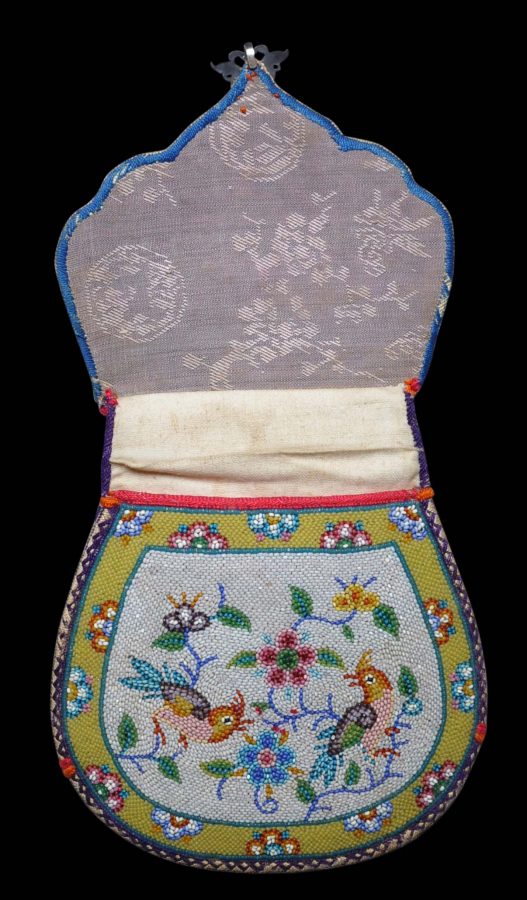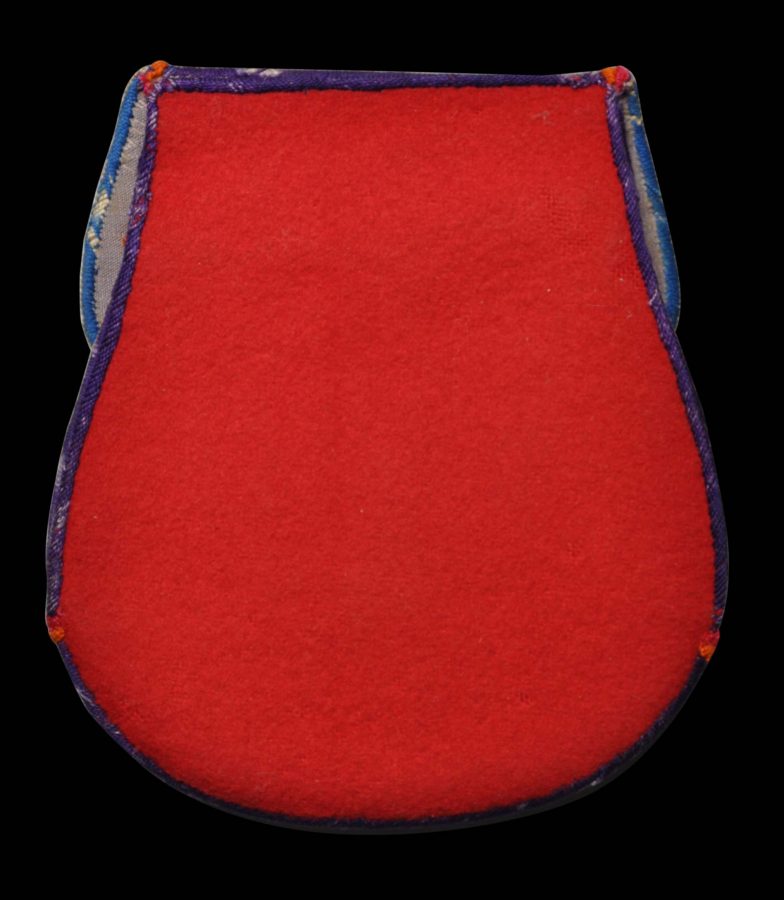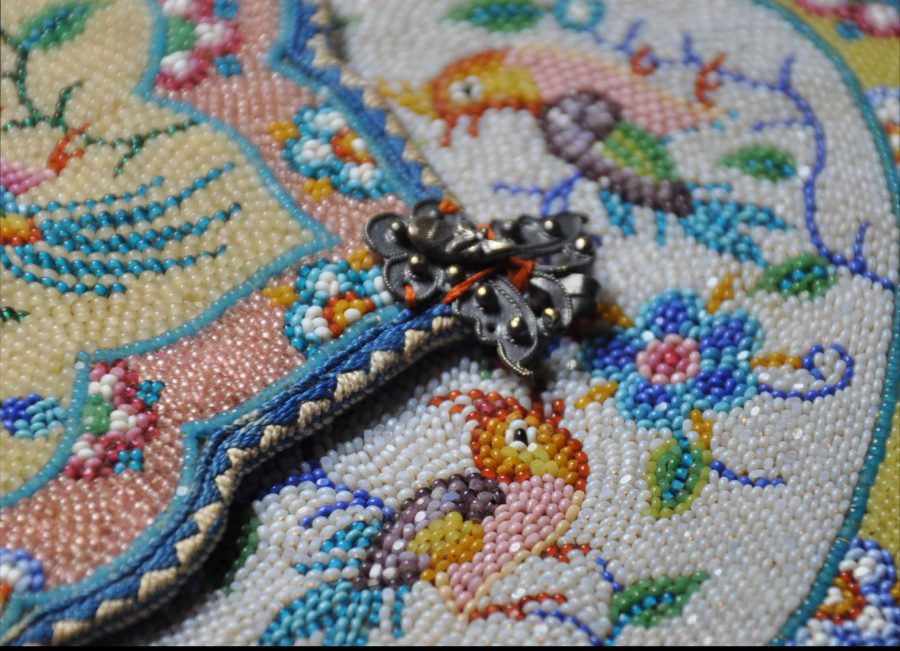Enquiry about object: 5218
Peranakan Beaded Wedding Purse with Silver Fittings (Oh Pao)
Straits Chinese People, Malay Peninsula circa 1910
height: 11.2cm, width: 10cm
Provenance
collected by Alwyn Sidney Haynes (1878-1963), and thence by descent. Haynes was a colonial administrator in Malaya and the Straits Settlements between 1901 and 1934. He held many posts including Acting British Resident, Pahang (1924); British Resident, Perak (1925); British Advisor, Kedah (1925); British Advisor, Kelantan (1930); and Acting Colonial Administrator, Straits Settlements (1933), after which he retired and returned to England, and lived near Stratford-upon-Avon, and then in Leamington Spa. Haynes loaned some of the items he collected in Malaya to the Pitt Rivers Museum in Oxford in 1939. He was awarded an Order of the British Empire (OBE) in 1950.
Of its type, probably this is the best example of a Straits Chinese beaded wedding purse known. It is in pristine condition – front and back – and it has an applied silver butterfly catch on the covering flap.
The reverse is fitted with a flap to allow a belt or sash to pass through, and the interior is divided into two pockets. The reverse of the purse comprises a red velvet panel.
The front and cover panels are decorated with birds and flowers, all in the finest Rocaille beadwork. The mute, harmonious pastel colours
Such purses were worn by the bride and the groom and would contain token coins to symbolise hoped-for prosperity and abundance. This example most probably was intended for a bride.
Rocaille beads were made in southern France and were widely used in Singapore and the other Straits Settlements for beading slippers, wedding pillow ends, betel set mats and other paraphernalia associated with baba/nonya culture. The Straits Chinese referred to the beads as manek potong (‘cut beads’) and acquired them from street peddlers and specialist merchants for the purpose of beading and embroidery.
References
Cheah, H.F, Nyonya Needlework: Embroidery and Beadwork in the Peranakan World, Asian Civilisations Museum, 2017.
Ee, R., et al, Peranakan Museum A-Z Guide, Asian Civilisations Museum, 2008.
Ho, W.M., Straits Chinese Beadwork & Embroidery: A Collector’s Guide, Times Books International, 1987.


